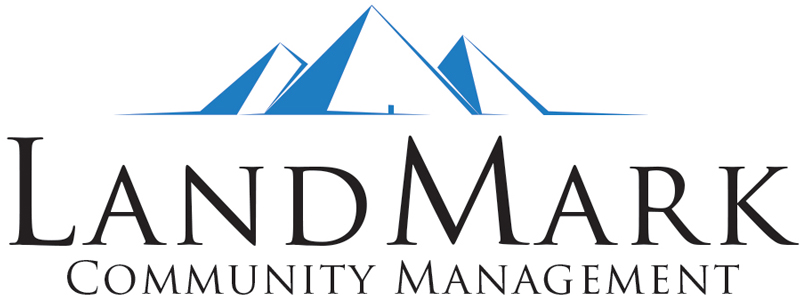Every homeowner and board member should familiarize themselves with the different HOA documents and which ones take precedence over others. While the contents of these documents can vary from one association to another, they generally serve the same purpose.
What Are HOA Documents?
The governing documents of a homeowners association act as guides in terms of governance, procedures, and rules. These documents establish how an association should operate and outline the expectations and obligations of both the HOA and the homeowners.
Typically, homeowners association documents are recorded with the county recorder’s office. Residents can secure a copy through that office or by submitting a request to the HOA board or manager. Homeowners are usually given a copy of the documents when they first move into the community.
Hierarchy of HOA Governing Documents
Board members must enforce the governing documents of the association. Sometimes, though, these documents may contain conflicting provisions. When that happens, it is important to know which document takes precedence.
Below, you will find the hierarchy of HOA documents.
1. Federal, State, and Local Laws
Above everything else, federal, state, and local laws take precedence. Federal laws take the top spot, followed by state laws, and then local laws. As such, it is always important to check the law when amending or interpreting your governing documents.
When your HOA acts outside of the law, it may be in legal trouble. For example, if your HOA has a rule that prohibits satellite dishes altogether, that is in violation of the Federal Over-the-Air Reception Devices Rule. Other noteworthy federal laws include the Fair Housing Act, the Fair Debt Collection Practices Act, and the Freedom to Display the American Flag Act.
2. Community Map or Plat
Right below the laws of the land is the community plat or map. This map is usually recorded with the county office. It serves as the official and registered plat of your HOA community or development.
The community map or plat contains critical information such as boundary lines, property locations, and easements. It also determines which parts of the community are common elements, limited common elements, and exclusive elements. This helps clarify maintenance obligations.
Other important information you will find on the community map includes trash enclosure specifications, accessible parking spaces, and areas for future development.
3. Declaration of Covenants, Conditions, and Restrictions (CC&R)
The CC&Rs come in third place on the hierarchy list of governing documents. This document outlines the rights and responsibilities of homeowners and the association.
Some of the most common HOA covenants in this document are as follows:
- Assessment and dues obligations
- Maintenance responsibilities
- Enforcement authority
The CC&Rs also contain specific procedures when it comes to dealing with violations and disputes. This document essentially details what owners can and can’t do with their property and behavior. Violating a covenant or restriction comes with consequences, which you will also usually find in the CC&Rs themselves. Penalties can range from fines and suspension of privileges to liens and foreclosure, depending on the HOA.
Potential buyers should familiarize themselves with an association’s declaration before closing. Joining an HOA is typically mandatory when an owner buys a home. That means they must adhere to the community’s rules and suffer the consequences of any breaches. As such, if they don’t like the rules of the community, it is best not to push through with the purchase.
4. Articles of Incorporation
Structurally, homeowners associations are like corporations. Therefore, if an HOA incorporates, which is the case for most associations, it will have a set of Articles of Incorporation.
This document contains vital information such as the legal name, the physical address, and the corporate status of the association. Some articles will also include functional information regarding the HOA. As fourth on the hierarchy list, the Articles of Incorporation take precedence over the bylaws and operating rules of an association.
Although most states require the Articles of Incorporation, this document only does a little in terms of governing the operations of an association. The HOA will usually file this document, though, when it first forms.
5. HOA Bylaws
The homeowners association bylaws mainly govern how to run the community. It dictates the frequency of board meetings, how to conduct meetings, voting rights, and election procedures. The bylaws of an HOA also detail each board member’s responsibilities.
A lot of people get the bylaws and CC&Rs mixed up. The CC&Rs depict the rights and responsibilities of homeowners and the HOA, whereas the bylaws govern how HOAs operate.
6. HOA Rules and Regulations
Finally, the operating rules and regulations of an HOA take the last spot on the hierarchy. The rules may share similarities with the CC&Rs, but they act as more of a way to clarify and expound on the covenants. As such, the operating rules should not contradict the declaration.
One key difference between the rules and the CC&Rs is how the HOA board can change them. The board can generally adopt new rules or change existing ones with a simple board resolution. This only requires the vote of board members. In comparison, to amend the CC&Rs, the board often needs approval from a majority of the members.
Other HOA Documents
In addition to the six main documents, there are other HOA documents members should know about. These documents don’t govern the community, but they do play significant roles. They also give owners an idea of how the association operates.
These documents include but are not limited to:
- Financial statements or reports (including annual budgets, balance sheets, income statements, general ledgers, etc.)
- Reserve studies
- Insurance policies
- Board meeting notices and minutes
- Committee meeting notices and minutes
- Annual meeting notices and minutes
- HOA board election ballots
- Vendor RFPs and contracts
- Membership lists
Knowledge Is Power
Whether you’re running an HOA or simply living in one, the association’s governing documents can provide you with plenty of insight and guidance. Homeowners should understand the contents of their HOA documents to know what rights and obligations they have. Similarly, board members should understand these documents to know their responsibilities and how to run the community.
Landmark Community Management helps Texas board members interpret and amend the governing documents of their HOA. Call us today or contact us online to learn more!


